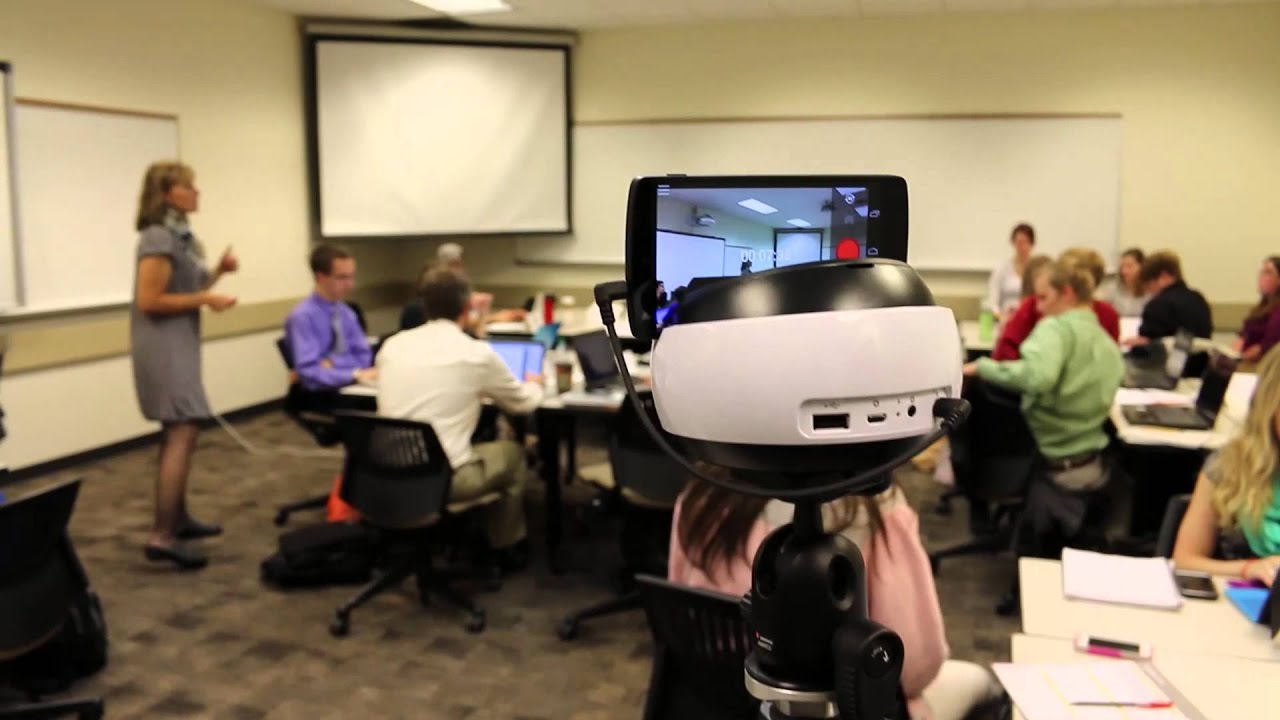WHY record myself on video?
It’s difficult to gauge the impact of watching oneself on video until we have done it. There is much to discover about our practice that only becomes apparent when we see it “from the outside”, so to speak: our pace, our body language, the way we interact with particular students, how we navigate classroom space or how students respond to certain tasks. Someone else’s notes after a classroom observation may provide food for thought, but what we notice about ourselves will naturally be more compelling (and more in line with our Professional Learning Plan goals).
Whether you record yourself as part of your portfolio of teaching and learning (to spark ideas), after you have identified a goal (to gather data before selecting a strategy to implement), or after you start implementing a strategy (to gauge progress), there is always something to learn.
HOW do I record myself on video? Some tips:
- Tell your students in advance. Why not share with them that we are all lifelong learners in this community and you are learning more about your teaching? Whether you share details about your professional goals is your choice, but clearly communicate to students that the video is for your professional growth and it is private and confidential. (And of course, treat it as such!
- The device you use should be your own in order to remain the owner of the digital material. You can use your laptop or borrow the Swivl robot (from Eliana at Le Rosey), which allows you to mount your phone/tablet and wear a marker so the camera can follow you as you move around the room (see photo). Tripods and video cameras are also available from the tech office, but be sure to download the video and delete it from the device before returning it. Some schools use the GoPro360, which can be placed in the middle of the room and will record 360o.
- Place the device in a suitable position. Depending on your objectives, it might be convenient to place the camera behind students to capture the whole room, including you. Keep in mind that the microphone will pick up whatever is closest. If using the Swivl robot, the marker incorporates the microphone.
- Be aware that the first time can feel awkward (for students and teachers). We try to preempt some of that awkwardness by telling our students in advance of the day, but it’s also worth recording more than once to reduce self-consciousness (students generally forget that the camera is there within a few minutes).
WHAT do I do with the video? Some options:
- Watch it and keep track of what you notice. Is there something in your practice that strikes you positively? Is there something that you would like to improve in your practice after watching the video? Is there something that you saw that raised questions in your mind? Videos can help (a) reinforce good practice, (b) highlight an area for growth or (c) signal a line of inquiry for further investigation. Creating a checklist can help you focus when you view it.
- Share it with your Learning Partner and discuss your observations. Your Learning Partner might invite you to use one of Jim Knight’s protocols during the conversation.
- Select a specific clip to watch together and discuss with your Learning Partner. If you are videorecording your class after identifying a goal or strategy, the clip allows you to focus on a relevant moment. Do you want to improve how/when you ask open questions? Do you want to modify your interaction with a particular student? Do you want to ensure you differentiate? Any of these goals might lead you to review a clip with your Learning Partners as a way of getting a clearer picture of reality. Again, sharing your completed checklist can be helpful.
- Don’t forget to delete the video when the process is complete, not least because videos take up a lot of your device’s memory!
Give yourself the opportunity to open new doors of understanding into your professional practice. Once we overcome the awkwardness of watching ourselves, there is much to learn from a video recording!
If you would like to discuss any of this content, please contact me.
